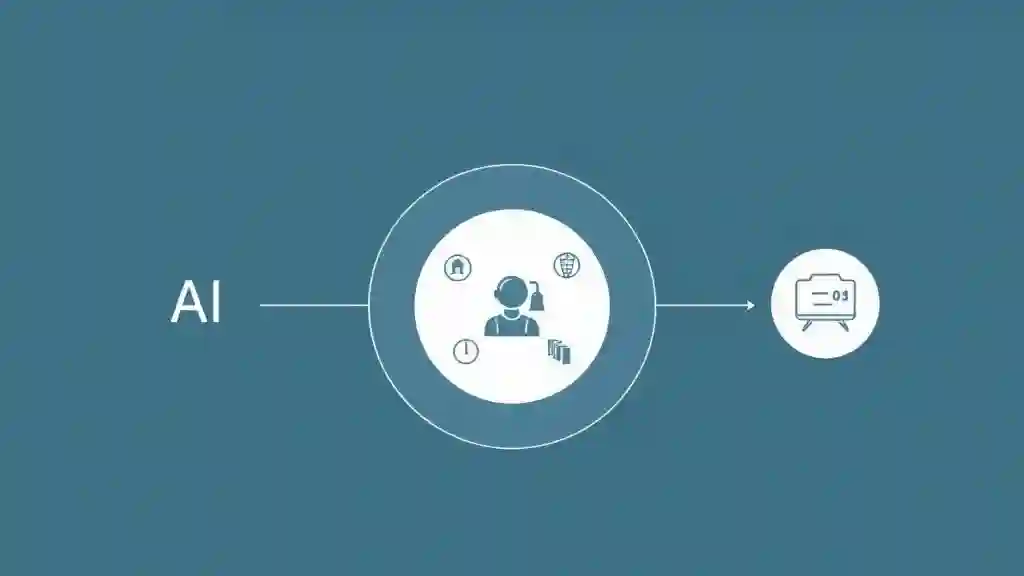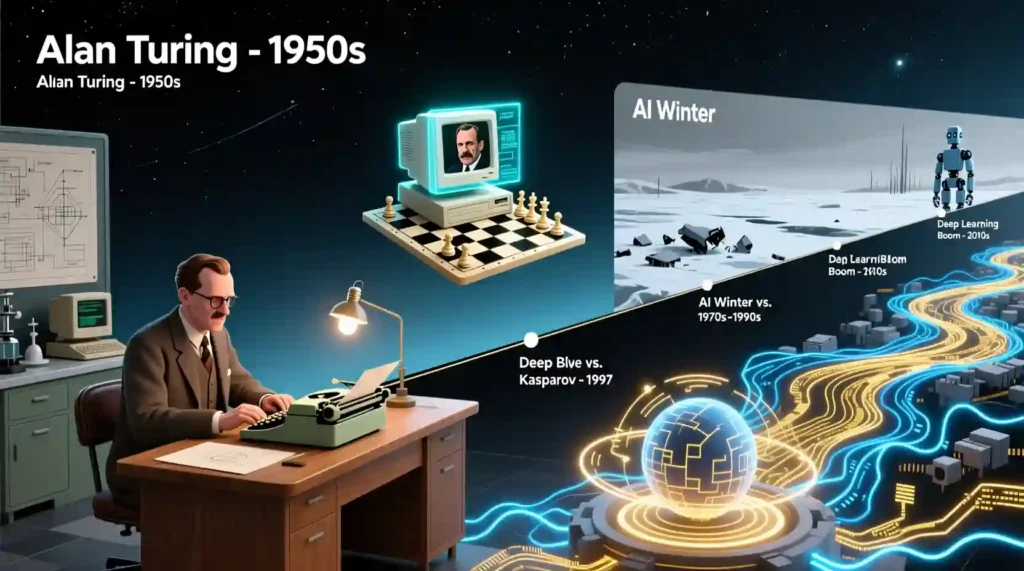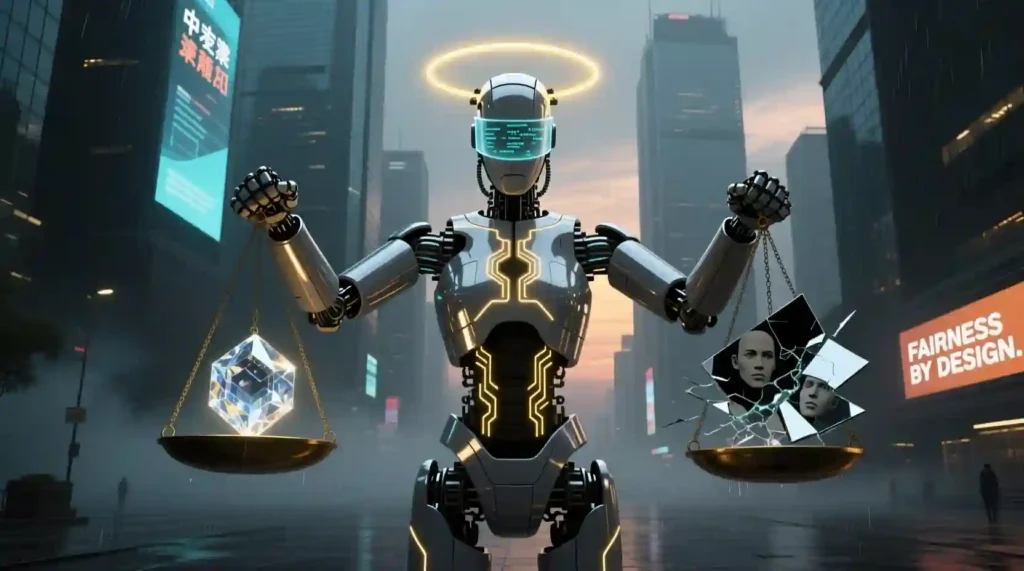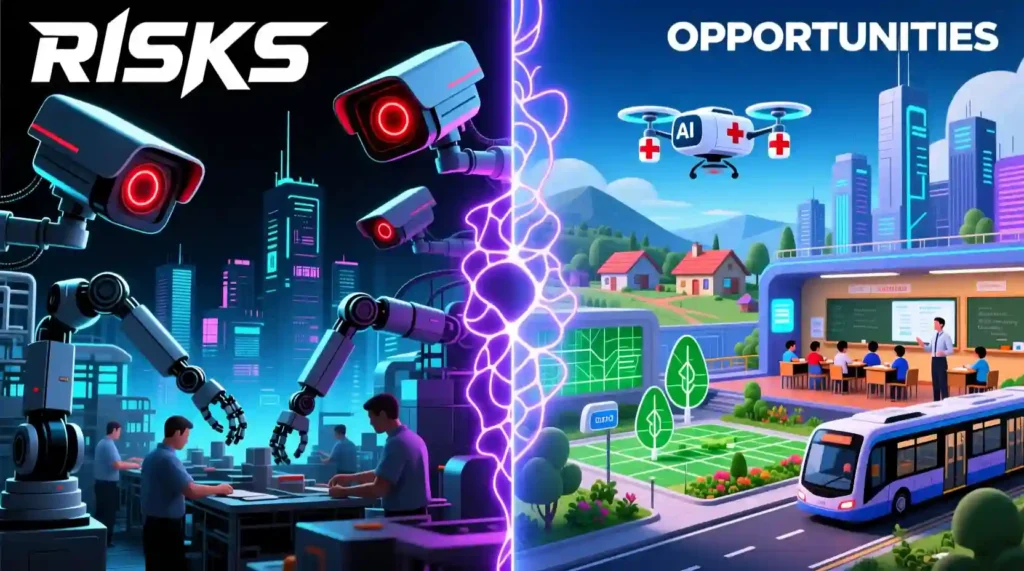
Fundamentals of AI: A Beginner-Friendly Guide to History, Ethics, and Society
Artificial intelligence is everywhere now — in your phone, in your car, even in the way Netflix knows what you’ll binge-watch next. But when we talk about the fundamentals of AI, it can feel like a foggy, high-tech mystery.
So let’s clear the fog. No jargon bombs. No intimidating equations. Just a simple, human walkthrough of what AI really is, where it came from, and why it matters for you, me, and the world we live in.
I’ll tell you this up front: once you see the basics, you’ll realize AI isn’t some distant sci-fi robot story. It’s already woven into your daily life in ways you probably don’t notice.
What Is Artificial Intelligence?

Definition and Key Concepts
At its core, artificial intelligence means getting machines to show a kind of “intelligence” — the ability to learn, reason, or solve problems in ways that mimic humans.
Think of it like teaching your laptop or phone to not just follow orders, but to figure things out. That’s the heart of the fundamentals of AI.
Now, let’s draw some lines:
- AI is the broad idea: machines showing smart behavior.
- Machine Learning (ML) is a subfield: machines learn patterns from data instead of being hard-coded.
- Deep Learning (DL) is an even deeper slice: machines use layers of “neural networks” that copy how our brains process information.
AI → ML → DL. Big umbrella → smaller circle → even smaller circle.
Types of AI
Not all AI is equal. Let’s break it down into flavors:
- Narrow AI: This is most of what exists today. Siri, Alexa, Google Maps, YouTube’s recommendations — they’re “smart” in one specific area. They can’t do everything, just their programmed lane.
- General AI: This is the dream (or nightmare) scientists chase — machines that can think and learn across any task, like a human.
- Superintelligence: The “I, Robot” level future — unknown, risky, fascinating.
How AI Works (Basic Overview)
So how does it actually “think”? Let’s keep it simple.
AI works by taking data → feeding it into algorithms (sets of instructions) → spotting patterns → and using those patterns to predict or decide something.
Imagine showing a computer thousands of cat photos. Eventually, it learns the patterns of “cat-ness” (whiskers, tails, pointy ears) and can spot a cat in a new photo it’s never seen.
That’s AI at work: pattern recognition + decision-making.
Common AI Terms Explained
Let’s decode some words you’ll bump into:
- Machine Learning: Teaching machines by giving them lots of examples instead of rules.
- Neural Networks: Math systems inspired by brain neurons, built to detect patterns.
- Natural Language Processing (NLP): How machines understand and use human language (like chatbots, translation apps, or me right now).
- Dataset: A big collection of data, like thousands of photos, articles, or voices.
- Algorithm: A recipe of steps the computer follows to solve a problem.
If this sounds like schoolwork for machines… well, it kind of is.
A Brief History of AI

Understanding the fundamentals of AI means knowing it didn’t just pop up when ChatGPT launched. AI has been in the works for decades — full of breakthroughs, failures, and revivals.
Early Beginnings
The story kicks off in the 1950s. People like Alan Turing were asking: “Can machines think?” Turing proposed a test — if you chat with a machine and can’t tell it apart from a human, that machine has intelligence.
In those days, researchers dreamed of computers solving problems like humans. They built early programs that could play chess, solve puzzles, and do simple math-based “thinking.”
AI Winters and Revivals
But here’s the thing: AI wasn’t a smooth ride.
Funding dried up. Promises were too big. Computers were too weak. People lost faith. These dry spells were called “AI winters.”
Modern AI Era
Fast forward to the 2010s — the deep learning boom. Suddenly, machines weren’t just “smart” at math but could:
- Recognize faces in photos.
- Translate languages in real-time.
- Drive cars on highways.
- Create art, music, and text.
This is the age we’re living in right now — AI baked into everyday tech. It’s not just research anymore; it’s your Spotify, your Tesla, your Netflix, your Google search.
The Ethics of AI

Here’s where the fundamentals of AI get serious. It’s not just about what AI can do, but what it should do.
Why Ethics Matter in AI
This isn’t just theory. In 2018, Amazon scrapped an AI hiring tool after discovering it systematically downgraded women’s résumés because it was trained on a decade of male-dominated hiring data (Reuters, 2018). That’s how hidden bias can quietly turn into real-world discrimination.” Or facial recognition misidentifying someone. Or a chatbot spreading harmful misinformation.
That’s why ethics matter. Because when machines are making decisions, real human lives are impacted.
Common Ethical Questions
The biggest questions sound almost like a philosophy class:
- How transparent should AI decisions be?
- If an AI makes a harmful mistake, who’s accountable — the coder, the company, or the machine?
- Should there be limits on AI in surveillance, weapons, or politics?
Responsible AI Development
The push today is for responsible AI. That means:
- Fairness: No hidden bias against race, gender, or background.
- Transparency: Explaining how and why AI makes decisions.
- Privacy by Design: Building systems that protect, not exploit, personal data.
Global groups like UNESCO, the EU, and the IEEE are creating guidelines for ethical AI. It’s not perfect, but at least the conversation is happening.
AI in Society – Current and Future Impacts
AI isn’t stuck in labs anymore. It’s embedded in our society, quietly reshaping the way we live, work, and connect.
AI in Daily Life
Take a look around. AI is in:
- Personal Assistants: Siri, Alexa, Google Assistant.
- Recommendation Systems: TikTok’s “For You” feed, Netflix’s top picks.
- Automated Customer Service: Chatbots that answer bank or airline questions.
Sometimes it feels invisible, but it’s everywhere — guiding, nudging, predicting.
AI Transforming Industry
Entire industries are flipping upside down with AI:
- Healthcare: Early cancer detection, drug discovery, AI-powered diagnostics.
- Finance: Fraud detection, algorithmic trading, personalized banking.
- Transportation: Self-driving cars, smart traffic systems.
- Education: Adaptive learning apps, AI tutors that adjust to student pace.
It’s not hype — it’s already changing how businesses operate.
Role in Society
We’ve already peeled back the first layer of the fundamentals of AI — what it is, how it works, where it came from, and the ethics shaping it. Now let’s dive deeper into how it impacts society, jobs, culture, and what skills you need if you’re just starting your AI journey.
Because the truth is: AI is not just about machines. It’s about us.
Society – Current and Future Impacts
Job Market and AI
Let’s face it — one of the scariest conversations around AI is about jobs.
Yes, AI is replacing certain tasks. Think cashier checkouts, data entry, or basic customer service chat. Machines are faster, cheaper, and they don’t take coffee breaks.
But here’s the thing nobody tells you: AI also creates new jobs. Data analysts, AI trainers, ethicists, prompt engineers — roles that didn’t even exist a decade ago.
The bigger picture? It’s less about AI “stealing” your job and more about how fast you adapt. The workforce is shifting, and reskilling is the safety net.
Society and Culture
AI is shaping not just work, but the way we connect and express ourselves.
- Social media feeds powered by AI decide what you see — and what you don’t.
- Deepfakes blur the line between real and fake, raising scary questions about truth.
- Chatbots and voice assistants are becoming “companions,” changing how humans interact with tech.
Culture itself bends around AI. From music playlists to digital art, the way we define creativity is being rewritten.
The Future of AI

When we talk about the future, the fundamentals of AI remind us to hold two truths: opportunity and risk.
Opportunities:
- Personalized healthcare tailored to your DNA.
- Smarter cities with sustainable energy use.
- AI-powered education bringing knowledge to kids in remote villages.
Risks:
- Loss of privacy.
- Widening inequality between those with AI access and those without.
- Machines being used in harmful ways (like autonomous weapons).
The future isn’t set in stone. That’s why public awareness — not just expert knowledge — is crucial.
Essential Knowledge for AI Beginners
You don’t need to be a coder to understand the fundamentals of AI. But there are some skills and tools that can help you if you’re curious.
Skills to Develop (Conceptual & Minimal Technical)
Start with the basics:
- Logic and problem-solving: Asking the right questions is half the game.
- Basic math: Statistics, probability — the stuff you use when you say, “What are the chances?”
- Curiosity: The willingness to explore and experiment. AI rewards people who keep asking “what if?”
Even sixth graders can grasp these skills. I once explained machine learning to my little cousin by saying: “It’s like when you practice basketball. The more you shoot, the better you get. Computers ‘practice’ with data in the same way.” He got it instantly.
Introduction to AI Tools and Languages
The most famous AI language? Python.
Why? Because it’s simple, beginner-friendly, and has tons of libraries for AI. Think of libraries like toolkits — TensorFlow, PyTorch, and Scikit-learn are some of the heavy lifters in AI projects.
But here’s the catch: you don’t have to code to explore AI. Many platforms (like Google Teachable Machine or ChatGPT itself) let you play with AI without touching code.
Resources for Learning AI Fundamentals
If you’re hungry to learn, the internet is your playground.
- Free Courses: “AI for Everyone” by Andrew Ng on Coursera, Google’s AI training, MIT’s OpenCourseWare.
- Books: Artificial Intelligence: A Guide for Thinking Humans by Melanie Mitchell is a gem.
- Tutorials: YouTube channels like Two Minute Papers make complex ideas fun.
Learning AI doesn’t have to mean going back to school. It can start with curiosity and a Wi-Fi connection.
Common Questions About Fundamentals of AI
Let’s clear up some of the most Googled doubts people have about AI.
Can AI Think Like Humans?
Short answer: no.
Longer answer: AI can mimic parts of human thought, like recognizing images or writing text. But it doesn’t feel emotions, self-awareness, or true creativity the way humans do.
Will AI Take My Job?
Maybe parts of it. But AI usually takes tasks, not entire jobs. Imagine a doctor: AI may handle scanning X-rays, but the human still delivers care and makes complex decisions.
Think “AI as a teammate,” not a thief.
How Does Machine Learning Actually Work?
It’s like this: give a computer a ton of examples, let it practice, and over time it finds patterns. Just like a student learning multiplication tables. The more exposure, the stronger the recall.
What Are Large Language Models (e.g., ChatGPT)?
These are AIs trained on massive amounts of text so they can generate human-like answers. They don’t “know” things in the way we do — they predict the next best word in a sentence based on patterns.
That’s how you’re reading these words right now.
How to Stay Updated with AI?
Follow the right channels. A few options:
- Newsletters like “The Batch” by Deeplearning.ai.
- Communities on Reddit (r/MachineLearning, r/Futurology).
- Trusted sites like MIT Tech Review, Wired, or AI-specific blogs.
Staying updated isn’t about reading everything — it’s about finding voices you trust.
Conclusion: Embracing AI With Awareness and Curiosity
Here’s the truth: AI isn’t coming. It’s already here.
The fundamentals of AI aren’t just about coding and algorithms. They’re about ethics, jobs, culture, creativity, and the very fabric of our society. They’re about how machines and humans co-exist — and what kind of world we choose to build together.
AI is a tool. Like fire, like electricity, like the internet. It can burn or it can brighten. The responsibility isn’t in the circuits — it’s in us.
So don’t fear it blindly, and don’t worship it either—approach AI with curiosity, caution, and courage. Learn the basics. Question the risks. Imagine the possibilities.
And most importantly — stay human in the process. Because at the end of the day, machines may be smart, but only humans can be wise.
CTA
🚀 The future of AI isn’t just for coders — it’s for all of us. Join the wave of curious beginners learning AI basics, ethics, and real-world uses. Let’s build a smarter, more responsible digital future together — starting with the Fundamentals of AI..
